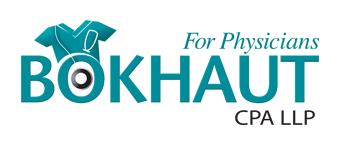
Dec 1, 2023
As the holiday season approaches, doctors often give gifts to colleagues, administrative staff, nurses, and professional advisors. While these gestures are generous, they may lead to unexpected tax implications.
Gifts to Non-Employees:
Doctors may give gifts to non-employees, such as colleagues or administrative staff. These gifts can be considered advertising/promotion costs and may be deductible against practice income. The deductibility is subject to tests like whether the expense is related to the income-generating activity of the practice and if the amount is reasonable.
Gifts to Employees:
The Canada Revenue Agency (CRA) provides clear guidelines on taxable employee gifts. Employees are those paid directly by the physician or corporation for work done and, generally, have tax withheld from their pay. The CRA categorizes gifts into cash, near-cash, and non-cash, each with specific tax implications.
Summary of Tax Implications for Employee Gifts:
Cash: Deductible against medical practice income, taxable to the employee (T4 Slip), requires withholdings.
Near Cash: Deductible against medical practice income, taxable to the employee (T4 Slip), withholdings required (income tax and CPP, no EI).
Non-Cash: Deductible against medical practice income, sometimes taxable to the employee (T4 Slip), withholdings required (income tax and CPP, no EI) if taxable based on ‘non-cash’ gift rules.
Taxable vs. Non-Taxable Gifts:
Taxable: Cash and near-cash gifts are subject to income tax, CPP, and EI withholdings.
Non-Taxable: Non-cash gifts under $500 per year, items of minimal value (e.g., cups, mugs, or t-shirts).
Gift Cards: Recent CRA updates classify gift cards as potentially non-cash, if:
• The value is under $500.
• It’s for goods/services from a single/group of identified retailers.
• The terms of the card prevent conversion to cash.
• The employer maintains a log records details like employee name, date, reason, type, amount, and retailer name.
Ensuring compliance with these conditions exempts gift cards from taxation; otherwise, they are considered near-cash benefits and are taxable.
* This article was prepared on December 1, 2023. Content is for informational purposes only and is not intended to be used as professional advice. Each taxpayer’s circumstances are unique. Bokhaut CPA makes no representation as to the accuracy and completeness of the information in this article and will not be liable for any errors or omissions in this information.
If you would like a consultation regarding tax for physicians, please contact us.

Sep 8, 2023
As veterans of higher education, physicians often anticipate that their children will carry the torch of post-secondary learning. Physicians can optimize savings and tax on this future expenditure by contributing to a Registered Education Savings Plan (RESP), which has a multitude of advantages. An RESP is a government-assisted savings vehicle designed to help Canadians save for their children’s post-secondary education.
1. Tax-Deferred Growth: While contributions to an RESP are made with after-tax money, the growth of your investments within the plan is tax-deferred. This means you won’t be taxed on the earnings if they remain within the RESP. When the funds are withdrawn for educational purposes, accumulated investment income is taxed in the child’s hands (typically at a low tax rate), rather than the doctor’s hands (typically high rate), resulting in tax savings.
2. Government Grants: The Canadian government incentivizes RESP contributions through the Canada Education Savings Grant (CESG) program, where they will match a portion of the annual contributions. The grant that is provided is scaled based on family income. As a result, physicians are generally eligible for a maximum grant of $500/year (20% of the annual contributions, up to $2,500). The grant, therefore, provides a guaranteed return on investment of 20% up to $2,500/year.
3. Income Smoothing: For incorporated physicians, drawing annual funds from their corporation to be invested in an RESP can assist with income smoothing and tax reduction. If the doctor is not in the highest personal tax bracket, drawing out funds on an annual basis, rather than large lump sums as the funds are required, can allow the funds to be extracted at lower tax brackets.
4. Mitigating Education Costs: The costs of higher education are continually rising. By contributing to an RESP, doctors build a financial cushion that can help alleviate the burden of tuition fees, textbooks, housing, and other educational expenses for their children.
5. Flexibility in Beneficiaries: If the intended beneficiary doesn’t pursue post-secondary education, the RESP plans offer flexibility, allowing the contributor to transfer the funds to another eligible family member without forfeiting government grants or investment gains
6. Investment Opportunities: Within the RESP, doctors can invest the contributed funds in various investment options like mutual funds, stocks, bonds, and GICs. This opens the door to potential growth through compounding over time, which can significantly enhance your child’s education savings.
7. Fostering Financial Discipline: Consistently contributing to an RESP instills valuable financial discipline and nurtures long-term saving habits. It provides a structured approach to set aside funds dedicated to future education.
8. Family and Friends Contributions: An RESP is not solely funded by parents or guardians. Family members and friends can also contribute, making it a wonderful way for others to contribute to a child’s education fund during special occasions, further boosting the education savings.
9. Avoiding Student Loan Debt: By saving for education ahead of time, physicians help their children avoid or minimize the burden of student loans. This can empower them with a solid financial foundation as they embark on their post-secondary education journey and subsequent careers.
10. Peace of Mind: The knowledge that there’s a dedicated fund for education purposes can provide both the doctor and their children with peace of mind. This assurance minimizes stress and uncertainty when the time comes to cover higher education expenses.
11. Lifetime Contribution Limit: While there is a lifetime contribution limit for each beneficiary, there is no annual ceiling on RESP contributions. This provides the flexibility to catch up on contributions if you haven’t been able to contribute as much in previous years.
Contributing to an RESP is a strategic financial decision that offers a plethora of benefits to physicians, from tax advantages and government grants to investment opportunities and peace of mind. It is essential to familiarize yourself with the rules and regulations governing RESPs and tailor your contributions to your unique circumstances and aspirations.
* This article was prepared on September 7, 2023. Content is for informational purposes only and is not intended to be used as professional advice. Each taxpayer’s circumstances are unique. Bokhaut CPA makes no representation as to the accuracy and completeness of the information in this article and will not be liable for any errors or omissions in this information.

Nov 2, 2022
Are you a physician who moved in 2022, or are considering a move in 2023?
If so, your moving expenses may be deductible for tax purposes.
Are you eligible to claim moving expenses?
To claim moving expenses, you must meet the following criteria outlined by CRA:
- One of the following must apply to your situation:
- You are employed or self-employed and moved to work or run a business from a new location.
- ex) Moving to practice as a resident doctor, postdoctoral fellow, or attending physician
OR
- You are a student and moved to attend a post-secondary school full-time.
- ex) Moving for medical school
AND
- Your new home is at least 40 kilometers closer to the new work or school location.
*It is important to note that moving expenses incurred while immigrating into Canada are typically not tax deductible.
However, if you have found yourself on this blog, it is probable that you have some lingering questions regarding this tax deduction, like:
- What can you claim and what receipts should you be keeping?
- Can you still claim expenses if you will receive a reimbursement?
- How much can you deduct on your tax return?
What can you claim and what receipts should you be keeping safe?
Moving expenses are a highly reviewed tax deduction – and as such, it is important that you save all the support you need in the event that CRA requests supporting documentation.
These are some of the receipts/documents that you should avoid tossing in the bin:
- Sold (or selling) your old house, and buying a new one?
The following are claimable expenses:
Old House:
- Advertising Costs
- Legal Fees
- Real Estate Commission
New House:
- Legal Fees
- Land Transfer Taxes
- Title Registration
The above expenses should be explicitly outlined in your legal sale and purchase documents. Be sure to keep copies on hand to provide to your accountant come Tax Season.
- Driving to your new home?
- Vehicle Expenses (including gas)
- While you can opt to keep every receipt for moving related vehicle expenses, you may instead claim an amount based on a “simplified” calculation. This simplified calculation is based on a per kilometre rate and allows you to keep track of your odometer instead of logging every gas station receipt.
- Note – you may still be asked to provide some support for the “simplified” claim, but this is not common.
- Meal Expenses
- Like vehicle expenses, you can use a “simplified” calculation for claiming meal expenses incurred while travelling to your new home. Meal expenses are based on a flat rate per person per day.
- Note – you may still be asked to provide some support for the “simplified” claim, but this is not common.
- Hotel Accommodations
- The cost of temporary accommodations related to your move may be claimable up to a maximum of 15 days.
- Moving/Storage Fees
- Expenses incurred in order to move your household items to your new home, such as packing, hauling, movers, and in-transit storage, are claimable on your personal tax return.
Can you still claim expenses if you will receive a reimbursement for moving expenses?
If you will be reimbursed for your moving expenses, you can only claim a deduction for eligible expenses if:
- The reimbursement will be included in your taxable income. In which case, you are typically able to claim all eligible expenses as normal.
OR
- If the amount will not be included in your taxable income, you must reduce your claim by the amounts that will be reimbursed.
How much can you deduct on your tax return?
There is a limit on the amount of eligible moving expenses that you can claim on your personal tax return in a given year.
Typically, your claim is limited to the income earned from the new 99location, business location or the taxable portion of your scholarships/bursaries/ fellowships/grants received during the tax year, less an adjustment for other tax deductions claimed that relate to the income. This is known as your “net eligible income.”
If your “net eligible income” is insufficient to claim the full amount of moving expenses in one tax year, you can carry forward the unused amount to deduct in a future year.
If you would like a consultation regarding tax for physicians, please contact us below.
* Content is for informational purposes only and is not intended to be used as professional advice. Each taxpayer’s circumstances are unique. Bokhaut CPA makes no representation as to the accuracy and completeness of the information in this article and will not be liable for any errors or omissions

Oct 12, 2022
This article has been updated for the draft legislation proposals from the Department of Finance ‘Design of the Tax-Free First Home Savings Account’ Backgrounder, released August 9, 2022..
On April 7, 2022, the Federal Government released a budget with two new proposals for first time home buyers.
- Tax-Free First Home Savings Account (FHSA)- Effective 2023
The ‘Tax-Free First Home Savings Account’ (FHSA) will become available to Canadians starting in 2023.
The government is likely to announce further details which could alter the current interpretation of the rules.
This program allows you to make tax deductible contributions to an FHSA which can subsequently be withdrawn for the purchase of a qualifying home on a tax-free basis.
Details of the program are included below.
FHSA
Eligibility Requirements:
To be eligible, you must:
- Be a Canadian resident
- Be 18 years of age
- Qualify as a ‘first-time home buyer’
- A ‘first-time home buyer’ is someone who has not lived in a home that they owned, or beneficially owned, in the calendar year or in any of the preceding 4 years.
Contributions:
- The maximum annual contribution limit is $8,000
- The maximum lifetime contribution limit is $40,000.
- Therefore, it takes at least 5 years to ‘max out’ your FHSA
- You are able to carry forward unused portions of your annual limit to be contributed in future years, up to a maximum of $8,000.
Example:
In year one, you contribute $5,000 to an FHSA.
In year two, you are allowed to contribute a total of $11,000; your annual maximum of $8,000 plus your carry forward amount of $3,000 (Year one annual limit of $8,000 less $5,000 contributed).
- You may transfer funds from your RRSP to an FHSA, subject to the annual and lifetime contribution limits.
- This does not reinstate your RRSP contribution room.
- Contributions that are made following a qualifying withdrawal are not eligible for a deduction, even if there is available deduction limit.
- Contributing sufficient funds to max out your deduction limit prior to making a qualifying withdrawal provides the greatest benefit.
Deductions:
- The FHSA deduction limit only applies to the contributions made in the current calendar year, unlike an RRSP where deductions for contributions can be claimed from March of the current year to February of the following year.
- You are not required to claim the deduction in the year of contribution; deductions for FHSA contributions can be carried forward indefinitely.
Withdrawals:
- You cannot use both FHSA and HBP withdrawals for the same qualifying home
- You can only make a qualifying withdrawal from your FHSA for one property in your lifetime
- Withdrawal for purchase of home:
- You must be a ‘first-time home buyer’ at the time that a qualifying withdrawal is made.
- An exception to this rule is made to allow for qualifying withdrawals within the first 30 days after moving into the home.
- You must have a written agreement to buy or build a qualifying home in Canada prior to October 1st of the year following the year in which the qualifying withdrawal is made and intend to live in the home as your principal residence.
Provided that the above conditions are met, the entire amount of available FHSA funds can be withdrawn on a tax-free basis in one withdrawal or a series of withdrawals.
If the funds in your FHSA are not used for the purchase of a qualifying home within 15 years of opening the account or by the end of the year in which you turn 71, the funds must be withdrawn on a taxable basis or transferred to your RRSP or RRIF on a non-taxable basis. This does not impact your RRSP contribution room.
RRSP Home Buyers’ Plan:
You can ‘borrow’ up to $35,000 from your RRSP for a down payment on a qualifying home provided you are eligible.
Eligibility Requirements
To be eligible, you must:
- Be a Canadian resident
- Be 18 years of age
- Have not lived in a home that you or your spouse owned in the calendar year or in any of the preceding 4 years
- Have contributed the funds to your RRSP at least 90 days prior to withdrawal.
This program requires you to repay the borrowed funds back to your RRSP over a 15-year period. This repayment period begins the second year after you first withdrew funds using the HBP. In a year that you do not designate RRSP contributions as a HBP repayment, you will have to add the minimum required repayment amount to your personal tax return as RRSP income.
The funds repaid through the HBP will still become taxable income to you in the future when you withdraw them (presumably in retirement).
COMPARISON OF FHSA and HBP
| Attributes |
FHSA |
HBP |
| Contributions tax deductible |
Yes |
Yes |
| Tax deduction deferrable |
Yes |
Yes |
| Maximum annual contribution |
$8,000 per year |
RRSP Contribution Limit |
| Contribution room carried forward |
Yes
Up to a maximum of $8,000 |
Yes
Based on RRSP limit |
| Minimum time required to maximize contribution |
5 years |
90 + days |
| Number of times you can participate in the program |
Once in your lifetime |
Unlimited
As long as the qualifying criteria are met. |
| Maximum withdrawal for home purchase |
$40,000
Plus investment returns earned within the account |
$35,000 |
| Repayment terms |
N/A |
Over 15 years |
Tax Deductibility:
Like an RRSP, contributions to an FHSA are tax deductible. Both deductions can be deferred to a future taxation year when the advantage of a deduction may be greater.
For Residents:
There can be a tax benefit to deferring your deduction until your first or second year of practice, when income is significantly higher.
For Attendings:
In years with low earnings (for example, a year in which you may be on parental leave), deferring the deduction until a year with higher earnings could provide increased tax savings.
Purchase Timing:
If you have a short time horizon for making a house purchase, the RRSP Home Buyers’ Plan may be more beneficial for you.
If the time constraints are not concerning, the tax advantages of the FHSA outperform the RRSP HBP.
- First Time Homebuyers’ Tax Credit – Effective on purchases made on or after January 1st, 2022
Previously, when an individual purchased a qualifying home, they were eligible for a tax credit of $5,000 (equivalent to $750 in tax savings).
The 2022 Federal Budget has doubled the credit from $5,000 to $10,000, which now provides the taxpayer with $1,500 in tax savings.
If you have any questions on the above, please contact us.
* This article is based on details available as of the release date of the draft legislative proposals from the Department of Finance ‘Design of the Tax-Free First Home Savings Account’ Backgrounder, released August 9, 2022. Content is for informational purposes only and is not intended to be used as professional advice. Each taxpayer’s circumstances are unique. Bokhaut CPA makes no representation as to the accuracy and completeness of the information in this article and will not be liable for any errors or omissions in this information.

Mar 12, 2022
How to Organize Yourself for Personal Tax Filing
Step 1: Be Aware of Your Income & Expenses
As a self-employed physician, fee-for-service income can come from a variety of sources, including various health authorities (WRHA, NRHA, IERHA, etc.), private billings, and government agencies. As such, tracking the various income streams be challenging, depending on your time and organization skills.
Some agencies will report fee-for-service income on a T4A slip. This slip is like a T4, except it reports income where no tax was withheld. Other fee-for-service sources, such as clinics, may handle billings on your behalf and prepare reports to summarize billings, collections, and overhead. While these reports are of helpful come tax time, it is unlikely that all of your income sources will provide you with income summaries/slips. This means that you may need to take a more active role in tracking your fee-for-service income.
If your writing resembles this, try tracking via excel:

You may wish to employ a billing service provider or submit and track your billings personally. Regardless of the reports available to you, or the method of billings/collections, it is important to keep track of total gross income (inclusive of billings earned but not yet collected) and any administrative fees incurred.
If you have numerous sources of fee-for-service income, it may be beneficial to set up a separate bank account to be used for these deposits and related business expenses. Doing so is advisable as it clearly distinguishes business transactions from personal transactions. This also provides separate business documentation that you can provide your accountant) in order to protect your privacy. Its none of your accountant’s business that you spent $234.04 on McDonalds in just 3 months. It’s been a long winter.
In addition to keeping track of your fee-for-service income, you are also responsible for tracking your business expenses in order to claim them. Generally, you are able to claim any reasonable business expense which had been incurred to earn business income.
In order to substantiate your reasonable business deductions, you will also need to maintain the records for each expense that has been claimed. Typically, records consist of receipts which identify the seller, date of purchase, and a description of the items/services purchased.
Step 2: Record Keeping
Your tax records need to be maintained for a period of 6 years from the end of the calendar year to which they relate.
Records for your income and expenses can be stored in the following formats:
- Paper: Storing physical copies of documents is an acceptable format. However, consideration should be given to the environment in which paper documents are stored so as to avoid possible deterioration or damage.
- Electronic: Electronic records are also acceptable as long as the information is clear and all of the transaction details are present in the electronic copy. It would be best to keep a backup copy to hedge against possible file corruption, or loss of another nature.
Ultimately, there is no superior method for the organization of your medical practice’s tax records. Whether you use an excel tracking log, sort documentation in a physical folder according to type of expense/transaction, or employ a third party to store and organize your files, the completeness of your tax reporting will depend on the type of information you include. The goal is not a colour coded binder that gets delivered to your accountant’s door every March 15th, wrapped in a bow – though we would most certainly appreciate it. The goal is efficient, accurate, and complete tax reporting that makes use of every deduction available to you.
As accountants, we prepare your returns based on the information you provide. Understanding what you should include within your medical practice’s tax records is critical to minimizing tax and optimizing results.
Happy tax season! 😊







